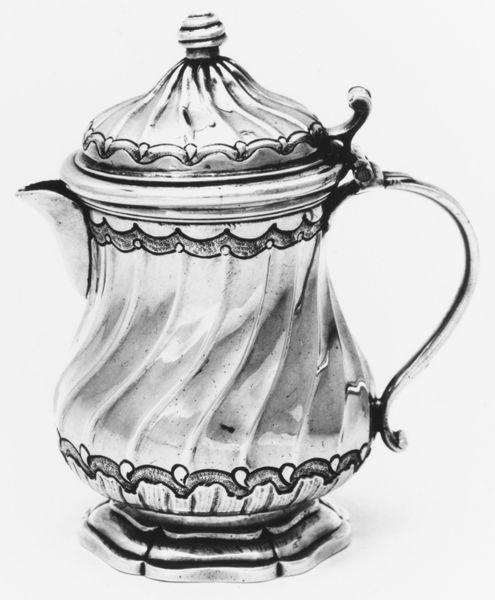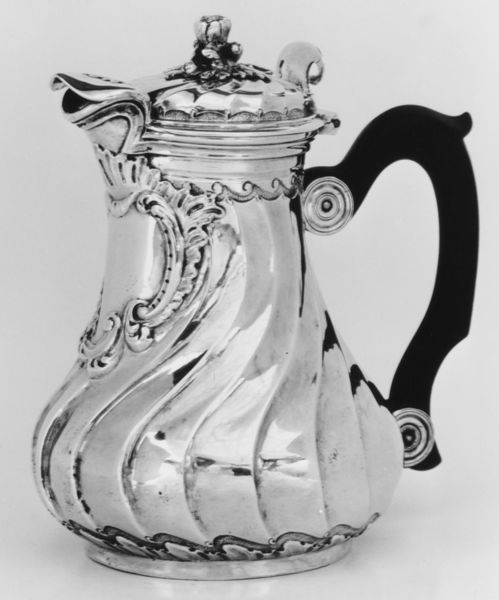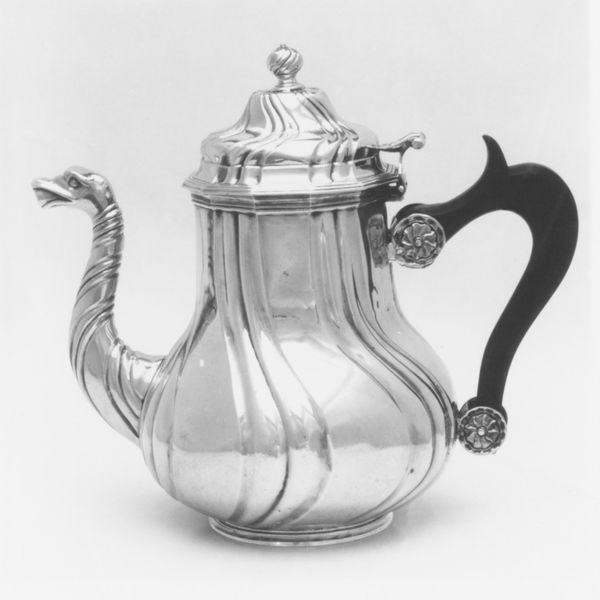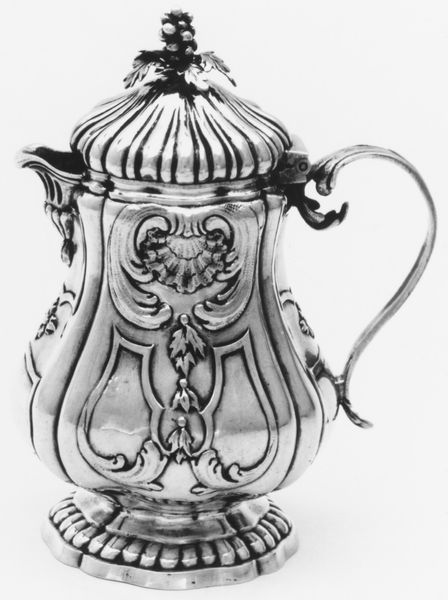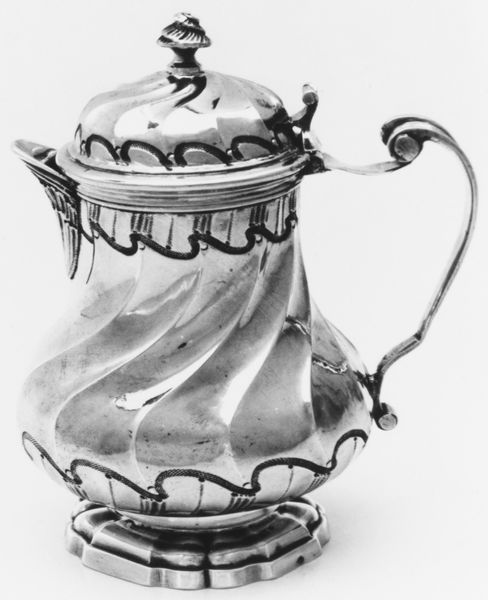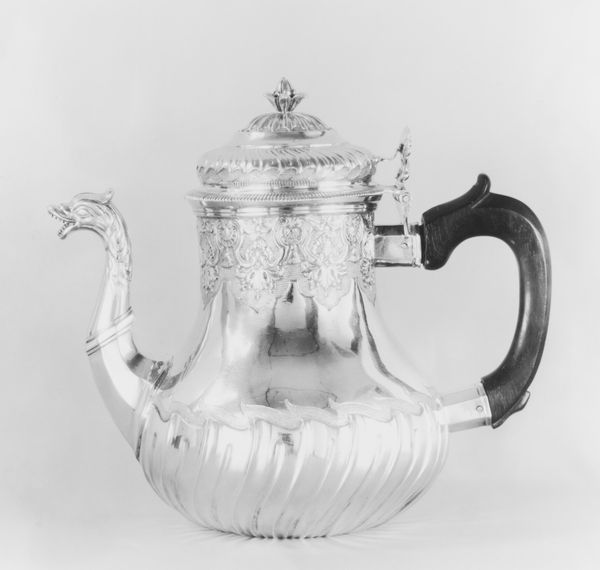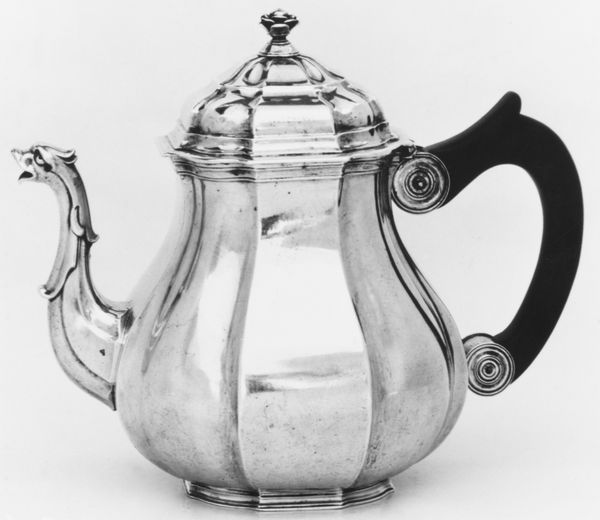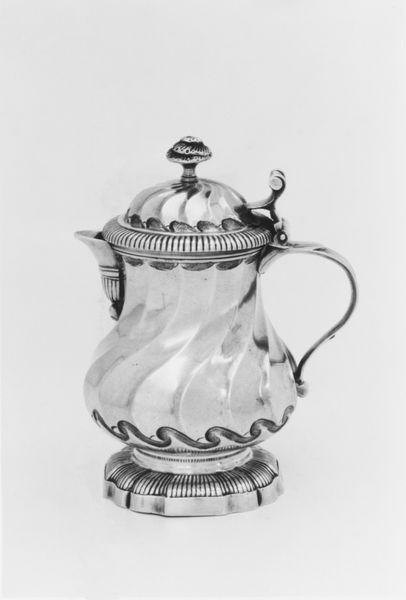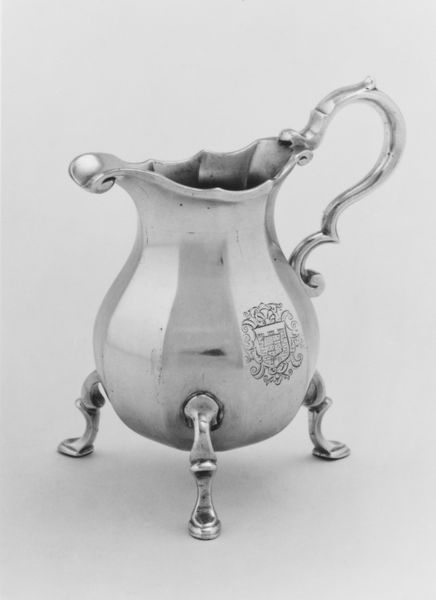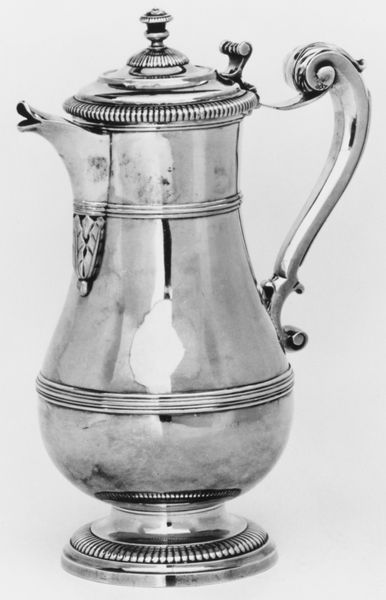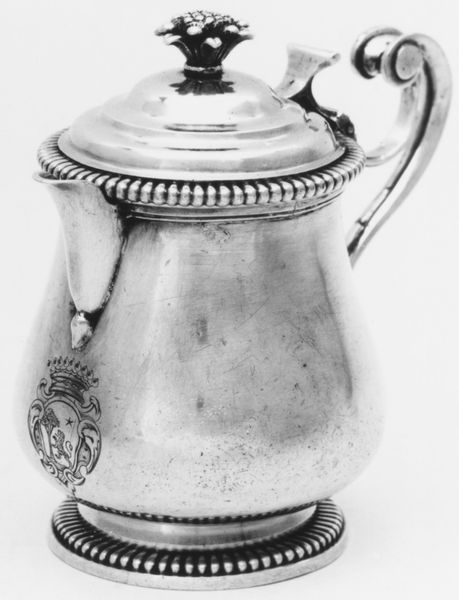
silver, sculpture
#
silver
#
sculpture
#
decorative-art
#
rococo
Dimensions: Height: 6 3/4 in. (17.1 cm)
Copyright: Public Domain
Curator: This elegantly crafted silver coffeepot, made around 1744-1745 by Jean-Baptiste Vallot, is a splendid example of Rococo artistry, and currently resides in the collection of the Metropolitan Museum of Art. Editor: The curves are so pronounced! It gives off a sense of upward, fluid movement. That twisted handle, the bulbous base--it almost looks like a silver sculpture more than a functional object. Curator: Indeed. Silverware like this, especially in this period, was often designed to be admired as much as used. Think about the social context. Drinking coffee became quite the ritual. Owning ornate pieces like this coffeepot signaled wealth, taste, and participation in polite society. Editor: So, beyond its beauty, it was also about status? The craft involved, the silversmith's labor—all tied to the value and display of wealth. It is such a precise formation of the material with its perfect, smooth finish, probably hammered and carved with great precision. I wonder who made the silver? Was it enslaved people or a trained artisan? Curator: Those are insightful points. Vallot, himself a master silversmith, undoubtedly ran a workshop. Understanding the hierarchy of labor within these workshops is critical; we see the reflection of broader societal structures and power dynamics mirrored in the production of even everyday luxury objects. It also became this kind of reflection point for political statements because drinking coffee was controversial as countries decided if it should be banned or available to its citizens. Editor: Absolutely. When we consider its history as both an object of use and of display, crafted by human hands in a complex economic environment, it allows for this connection with past consumers and artisans. It underscores a tension between functionality, the skilled labor involved, and the symbolic capital of high society in that specific moment of its creation. Curator: A delicate balancing act, to be sure, and one which the piece performs with great aplomb even after two and a half centuries. Editor: I'd say it pours history out along with that old coffee... or maybe that is tea? Who is to know these days?
Comments
No comments
Be the first to comment and join the conversation on the ultimate creative platform.
